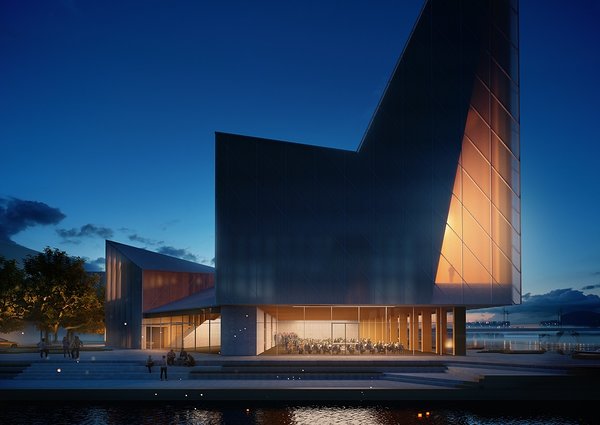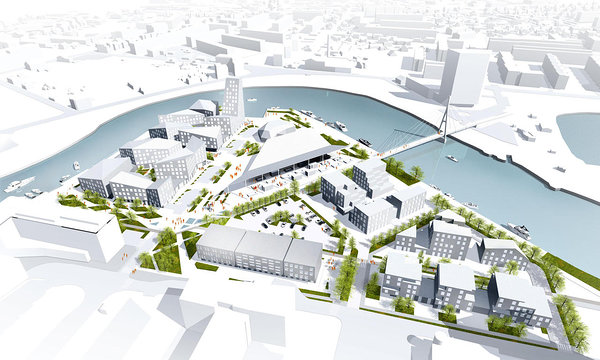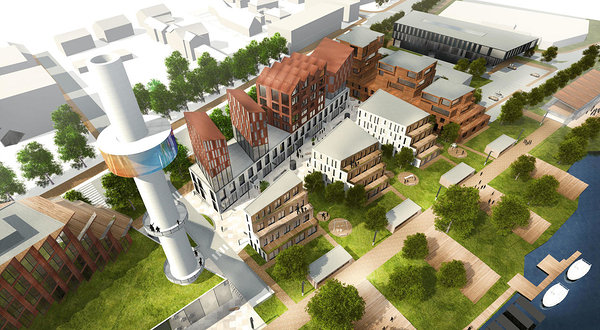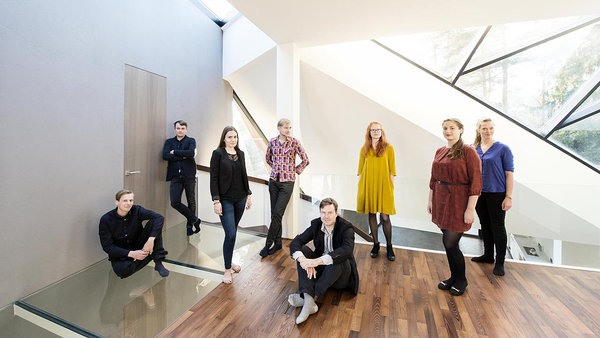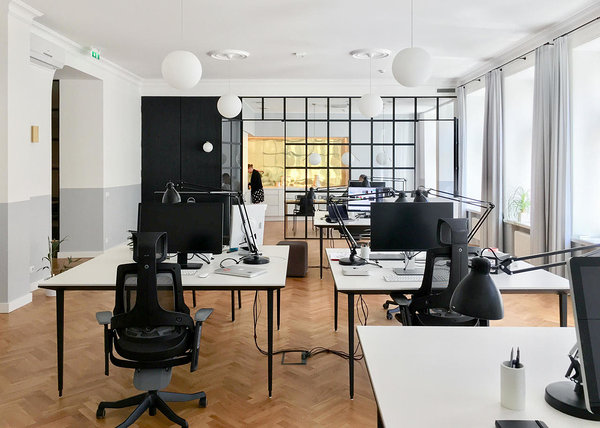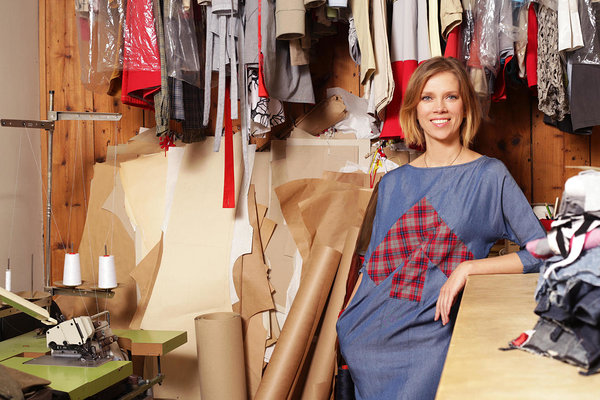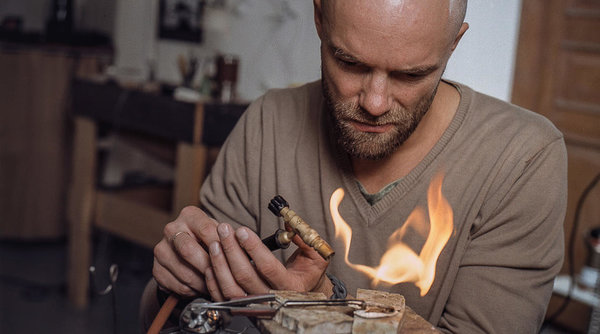Kauss Architects (KA) is a dynamic architectural firm based in Tallinn known for its cutting-edge designs and sustainable urban solutions. Since its inception, Kauss has been an early adopter and long-standing partner with Voog, effectively using the platform to showcase its innovative projects and architectural prowess.
We caught up with the Kauss team to discuss their design philosophy, recent projects, and how they use Voog to connect with clients and the architecture community.
Voog: Voog has been running under your website for a little more than two years now. How would you sum up your experience with us?
KA: First of all, we are extremely happy with our website design, which was created in collaboration with Tõnu Runnel and Tuumik Stuudio. The feedback from our clients has also been great. In our opinion, the greatest advantages of Voog are the simple and intuitive website management and the ease of adding new content.In order to add new content to our old website, which was created years ago, we needed someone capable of writing HTML code and tons of patience. Actually, back in the day, we used to create our designs also in HTML, and for our first website in 2004 we even created our first and last (to date) puppet animation.
Does your website “work” — in the sense that it has generated some new business?
KA: There have been cases of that, but in architecture new business depends first and foremost on your portfolio and on the style that you have established. For example, we have almost never done classical advertising; some in our industry even consider advertising low and bad style.Voog: This means that the goal for your website is...
KA: Our website's primary goal is to give potential customers an overview of our creative style and work ethic.We are gradually updating the gallery of our works. The gallery is our first publicity platform, as we share it on the website and on different social media platforms. From social media, people interested in architecture find their way back to our website to see our full portfolio.
If you asked us what you could improve on Voog, we would say deeper integration between the Facebook feed and the news section on the website. Right now, whenever we share news, we pretty much duplicate the content on Facebook and the website.
Voog: So, you're actually trying to bring new visitors to your website from Facebook. Do you also use some advanced tools for that (paid advertising, Facebook Pixel, etc.)?
KA: We must admit that we are quite lazy when it comes to managing social media content. In addition to sharing the most important news and our work, we really don't use any strategic marketing. Sharing the essentials is important, but our priorities are elsewhere.Voog: Does architecture, as an industry, have a unique etiquette regarding communicating with the customer? Are there certain dos and don'ts?
KA: We think that architecture is like any other industry. In that sense, there is a great variety of different projects, methods, and specialists. Of course, there are businesses that keep communication with the client as minimal as possible and get the project done as quickly as possible. If that is the case, it usually means that engrossment is minimal, as is the effort to educate the client. Our approach is the opposite of that.We want to offer convenient and high-quality project management. A project with us usually lasts 0.5 - 1.5 years. Our clients treasure analytical and clearly calculated project management, so we explain and educate extensively.
The budget of a project is always decisive, but the importance of a personal relationship with the client grows with the budget of a project — the bigger the project, the more important it is to share the same values and mindset.
Voog: What is the story of KAUSS? In other words, how would you introduce your collective to people who have never heard about you? And as we already touched on the subject of values – what are they for you?
KA: Kauss is an experienced creative collective that values an analytical, pragmatic, and artistic approach. We want all of our projects to be functional and architecturally intriguing.Our journey has been extremely colorful. Especially in the early years of our venture, there were many episodes that were so crazy that it is not decent to share them here. But, in short, Kauss was created in 2004 by 4th-year students of architecture. The economic growth and the bubble in the building industry enabled us to realize our craziest ideas.
We got burned quite a lot, but also we got to feel the hypnotizing influence of temporary success. Because we didn't have anyone older or more experienced on our team, we had to reinvent the wheel to set up all the administrative systems that go with running a business.
One interesting fact about our core team is that all four shareholders have been on different musical journeys and formed multiple different bands amongst themselves. Additionally, it is quite remarkable that the four shareholders in our creative team have managed to stay together for nearly 14 years.
Voog: Those crazy stories that you mentioned sound like extremely good material for learning a thing or two. So I am tempted to ask if you would maybe share one of them?
KA: At the beginning of the 00s, quite a few cowboy-capitalist businessmen still had a “style of conducting business” designed to impress.Showing off with expensive cars and social status was the everyday reality. The businessmen seemed to have endless pockets, so all we had to do was to draw the most impressive houses we possibly could.
It was only later that we realized that most of that prosperity was a bluff. However, as young and naive entrepreneurs, we tried to take on every possible project and see what came of it. We met a number of mysterious businessmen with a Russian background, Japanese investors, and real estate moguls with prison experience.
In working with all these interesting characters, we think it’s fair to say that we saw the world through rose-colored glasses. A lot of sketches that bordered on Sci-Fi were done during that period. However, thanks to that period, we established a deep understanding of all kinds of human souls. So, maybe the key takeaway could be that you should always try to learn from older colleagues but make decisions with your heart.
Voog: What does the future hold for Kauss? What are your next big goals and dreams?
KA: We recently finished a super successful project in the heart of Tartu — the development project Three Brothers. We designed the architecture, interior architecture of the hallways, and landscape around the buildings.In addition, another of our projects, Palamus' kindergarten, is soon to be finished. We hope that the result will be as good as it was with the Three Brothers. We are always seeking new challenges and trying to improve various skills across our team.
Thus, in the near future, we will continue our efforts to make a name for ourselves outside of Estonia. So far, we have succeeded in Finland and Denmark – in both, we designed a contemporary church building.
Voog: Soon, there will be a third skyscraper in Tartu, practically next to the Three Brothers. How do you feel about this project, and how would you comment on the city's planning in general? If it were up to you, what would Tartu look like in 20 years?
KA: The topic of high-rise buildings, or skyscrapers if you like, is rather sensitive in Tartu and in Estonia more generally. In a country that small, the scale of the idea of a skyscraper is totally unfamiliar and requires extreme disruption of the accustomed mindset. There has been some progress in Tallinn, where the city council has laid out a framework for how and where high-rise buildings should be developed. On the other hand, there is nothing like that in Tartu, and that makes the decision-making and processes less transparent.Fortunately, there has not been major wrongdoing so far, but every now and then, somebody wants to build a so-called skyscraper, so we never know what the outcome might be. A common framework, in my opinion, would be a good solution to this question to make a social agreement and decide what, where, and how we do things.
Tall buildings have always had a place in city spaces; historically, churches are nothing other than high-rises. A high-rise is visible from long distances, which makes it a good reference point for orienteering. In addition to that, they have a sculptural quality that gives an artistic touch to the silhouette of a city. The concrete building we are talking about is far enough from the sensitive city center and stands between horizontally powerful forms – next to the river and Anne canal – so there are great preconditions for a great result.
In 20 years, the city space in Tartu will be even more compact and cozy than it is today. We also hope to see it more diversified, have more layers, and be generally just exciting — in a word, more humane. It is wrong to think that architects would pour concrete everywhere, a widely spread misconception. In fact, we believe that it is important that we preserve the green spaces and natural diversity in Tartu.
However, in doing so, we think we should value the quality of the parks and other green spaces over the quantity of them. Having said this, we are aware that there are a lot of smart decisions to be made. We should get rid of the ugly Soviet architecture like the ugly Atlantis building. In place, we would like to see a contemporary non-privatized city space that would tie the historic city center and the eastern riverbank into an integrated whole.
In 20 years, we believe that the riverbanks will be walkable from one end to the other, offering both urban landscape architecture and wild nature. The city harbor block will notably broaden the city center. This whole area was architecturally ruined during the 1990s and 00s, but at least in theory, there is a great chance that it will be totally transformed sooner than we think.
We hope that it will be one of the most exciting parts of our city, with an open market, a theatre next to the river, lots of mini-parks, and the chance to buy fish straight from the boats docking in the harbor.
Voog: Where can people find you, both in the online and offline world?
KA: We have offices in Tallinn and Tartu, so there is a great chance that you will bump into us on the Tallinn–Tartu train.In addition to all the digital platforms, you can also meet our team on different paths:
- Kaur Talpseppa at the Tallinn University of Applied Sciences, teaching the next generation of architects
- Lauri Eltermaa on Soundcloud, releasing new music;
- Allan Pilter at one of the table tennis tables in Tallinn that he designed
- Urmo Mets at various bookstores, with his book, “Possible Houses”
You might also bump into Grete Veskiväli at different exhibitions or Kristiina Aasvee working on light installations at different events.
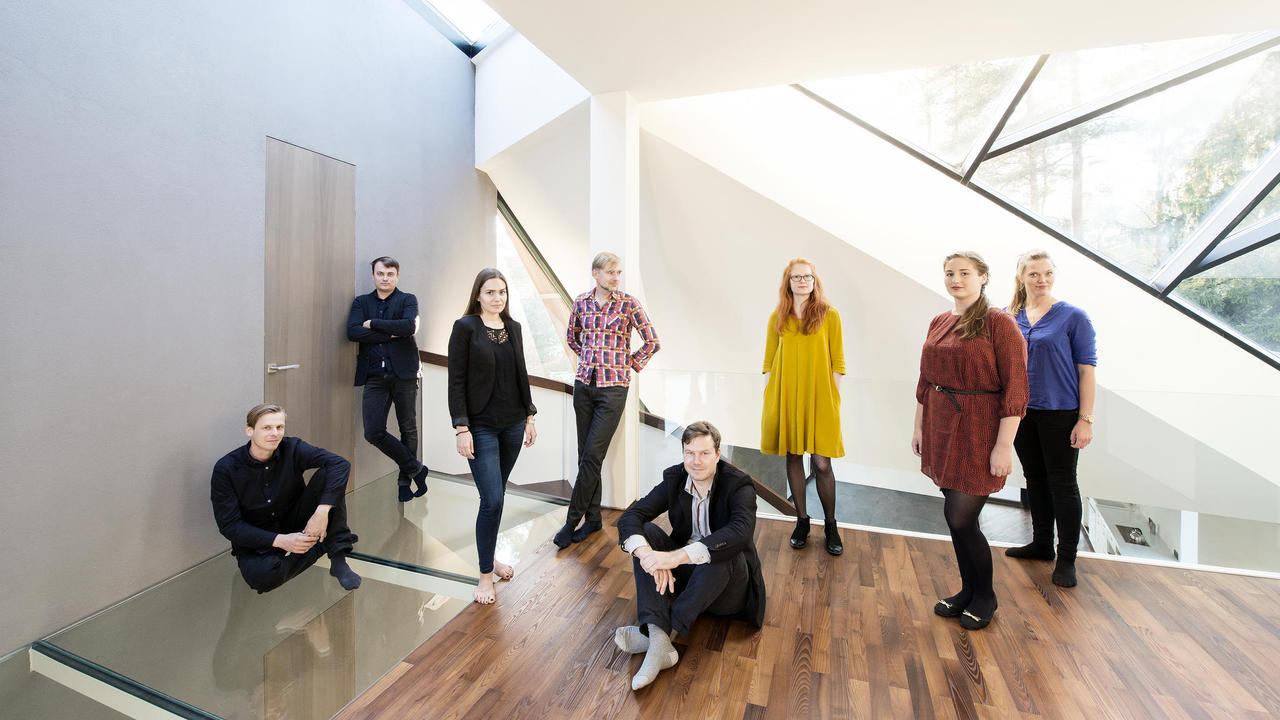
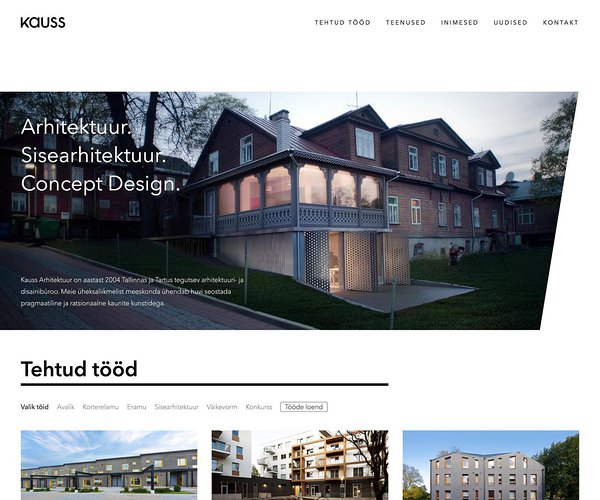
_block.jpg)
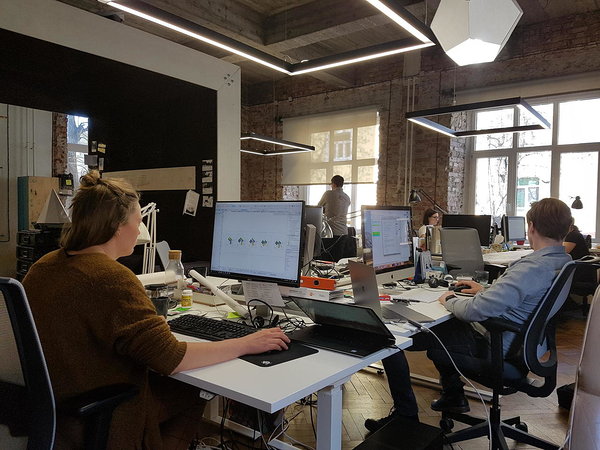
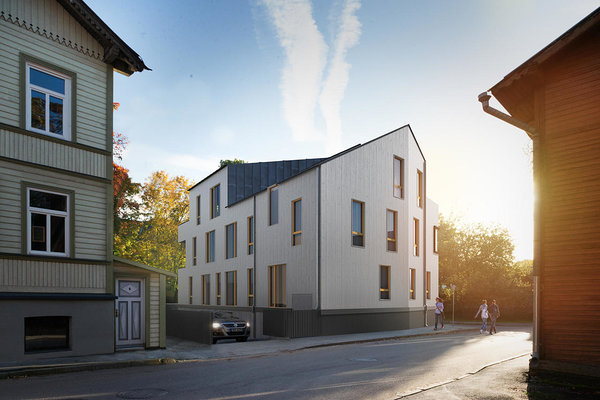
_block.jpg)
